#Jodo-shu Buddhism
Explore tagged Tumblr posts
Text
Life in the key of Shakuhachi

View On WordPress
#Amagazaki#Blues#Blues band#Buddhism#Buddhist#Buddhist Temple#Chan#Classical Shakuhachi#Japan#Jodo-shu Buddhism#Kansai#Komuso#Live House#Live music#Live session#meditation#memorial#Music#Nihon#Nippon#Osaka#Osaka Blues#Pilgrimage#Shakuhachi#Sui-Zen#Temple#Traditional Music#travel Japan#Zen#Zen Mind
2 notes
·
View notes
Text
Who Dwells In This House?
I’ve been mulling over a certain quotation of Honen (法然, 1133–1212), the 12th century Buddhist monk credited with spreading the Pure Land tradition in Japan, and thus founder of movements such as Jodo-Shu and Jodo-Shinshu: “All of our deeds in the realms of saṃsāra result from ties with the three worldly passions of greed, anger, and ignorance. Understand that when the worldly passions of greed,…
#Amida#Buddhism#Dhammapada#Honen#Japan#Jodo Shinshu#Jodo Shu#Nembutsu#Pali Canon#Pure Land#Shakyamuni
4 notes
·
View notes
Text
Three monk Chat
A while back at a visit to my temple in Amagasaki, Komyo-ji. After a ceremony the head monk, his disciple and I had our usual social gathering. Food, drinks, chatting about life, Buddhism, Zen, Shakuhachi. Komyo-ji is an official Myoanji Shakuhachi Dojo, besides being a Jodo-shu temple. It is also where I hold Zen sessions, which is unusual for. Jodo-shu temple. On this day I decided I would do…
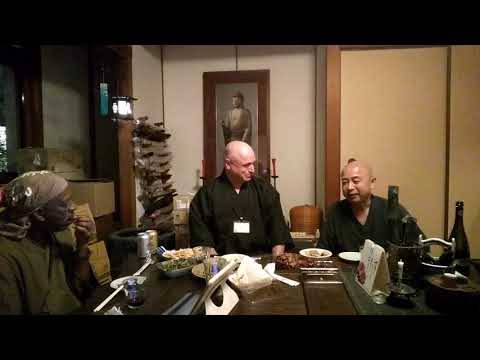
View On WordPress
#Blasain#Blasian#Buddhism#Buddhist#Ch&039;an#Chan Priest#flute#Honkyoku#Japan#Japan Temple#Japanese culture#Japanese music#Japanese Temple#Kansai#Komuso#Kyoto#Meditation#Myoanji#Osaka#Shakuhachi#Sui Zen#SuiZen#Takuhatsu#Traditional Japan#Zen#Zen Priest
0 notes
Text
Taming the Monkey Mind - A Guide to Pure Land Practice
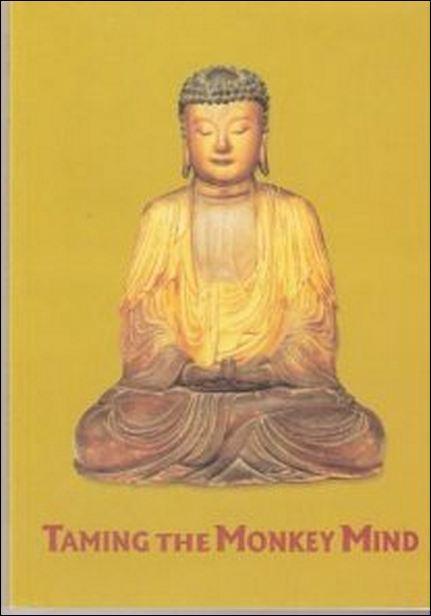

Taming the Monkey Mind - A Guide to Pure Land Practice Taming the Monkey Mind - A Guide to Pure Land Practice. Pure Land Buddhism is branch of Mahayana Buddhism. In Pure Land practice people focus on buddha in the form of Amitabha, the buddha of infinite life and infinite light. Believers put their faith in Amitabha Buddha and recite his name, confident in the promises he has given to deliver all who invoke his name. Download the free ebook here: (145 pages) :

Taming the Monkey Mind
What is Pure Land Buddhism?
Pure Land Buddhism is a branch of Mahayana Buddhism that emphasizes devotion to the Buddha Amitabha (also known as Amitayus or Amida Buddha) as the primary means of salvation. The ultimate goal for Pure Land Buddhists is rebirth in the "Pure Land" or "Western Paradise" — a celestial realm where one can practice the Dharma without the distractions and difficulties present in our current world, thus ensuring progress toward enlightenment. Key features of Pure Land Buddhism include: 1. Nianfo/Nembutsu: The core practice of Pure Land Buddhism is the recitation of the name of Amitabha Buddha. In Chinese, it's called "nianfo" and in Japanese, it's "nembutsu." The most common form of this recitation is the phrase "Namo Amituofo" in Chinese or "Nam(u) Amida Butsu" in Japanese. 2. Faith and Devotion: Pure Land places a significant emphasis on sincere faith in Amitabha Buddha and his vow to save all sentient beings. By reciting his name with genuine faith, believers hope to be reborn in the Pure Land. 3. Amitabha's Vows: Central to Pure Land teachings are the 48 vows made by Amitabha Buddha, particularly the 18th vow, in which he promises to ensure the rebirth in his pure land of anyone who sincerely recites his name. 4. Pure Land: This is a paradisiacal realm described in various sutras where practitioners are free from rebirth in the six realms of samsara and can pursue enlightenment without the obstacles found in our current world. 5. Scriptures: Pure Land Buddhism relies on several sutras, but the most important are the Longer Sukhavativyuha Sutra, the Shorter Sukhavativyuha Sutra, and the Amitayurdhyana Sutra. These texts describe Amitabha Buddha, his vows, and the nature of the Pure Land. 6. Accessibility: One of the appeals of Pure Land Buddhism is its accessibility. The primary practice of chanting Amitabha's name is simple and can be done by anyone, regardless of their level of education, social status, or previous deeds. Historically, Pure Land traditions became especially popular in East Asia, including countries like China, Japan, Korea, and Vietnam. In Japan, the Jodo Shinshu (True Pure Land School) and Jodo Shu (Pure Land School) are major representatives of this tradition. While the practices and teachings might differ slightly between regions and specific sects, the emphasis on faith in Amitabha and the aspiration to be reborn in the Pure Land remain central to all. Read the full article
0 notes
Text
Western variations for Japanese Buddhist traditions....
With Ōhigan came and gone I would like to share an idea for Westerners who practice Japanese Buddhism.
Ōhigan is celebrated by all Japanese Buddhist Schools and is a time to honor and remember our ancestors as well as remember the 6 perfections.
Traditionally bōtamochi and ohagi are made in the spring and autumn of ōhigan. These are mochi sweets made the same way both times of the year just named after different flowers bōtamochi after the bōtan or peony and ohagi after the higanabana.
In the West or at least the Midwest where I live. It is difficult to find the proper rice flour to make mochi. So I began to think I remember my grandmother making tea cakes. Semi-sweet cookies that we would have with iced tea during the summer and hot tea in the winter. A spin on mochi during ōhigan is making tea cakes with a small well in the center filled with a seasonal jam. Strawberry for spring and spiced apples or pumpkin for the autumn. Offer it to the ancestors and Buddha and then partake in the cookies yourself!
Just wanted to share my idea for any other Western Buddha its out there!
6 notes
·
View notes
Video
Chion-in Temple Kyoto 1930s por Blue Ruin 1 Por Flickr: Two Maiko girls and a Geisha standing underneath the Great Bell at the Chion-in Temple in Kyoto.
#Maiko#Geiko#Geisha#Kimono#Darari Obi#Chion-in Temple#Chionin#Jodo Shu#Pure Land Sect#Buddhism#Buddhist bells#Ghanta#Ogane#Great Bell#Large Bell#Daishoro#Great Bell Tower#Kyoto#Higashiyama-ku#Japanese#Japan#Showa period#Postcard#Okobo#Geta#Furisode#Darari-no-Obi#Dangling sashes
9 notes
·
View notes
Text
pure land buddhist - jodo-shu/shin and Bg3 pagan.
work with catholic saints and spirits of a folkloric, mythological and cryptic nature.
venerate and caretaker of my ancestors.
∘₊✧──────✧₊∘

Buddhism
Amitabha buddha
Guan Yin
Ksitigarbha
Tara - green and white
Sun Wukong
∘₊✧──────✧₊∘
Amitabha Buddha's birthday - November 17
Guan yin's birthday - February 24
Guan yin's enlightenment Day - July 2
Ksitigarbha's birthday/enlightenment day - July 30
Monkey King festival/birthday - September 7
vesak day - April 27
Hungry ghost festival - August 6

Pop culture paganism
mystra
selune/selene
∘₊✧──────✧₊∘
the apotheosis of midnight - September 15
the Mystery of the Night - every full and new moon.


Key;
⋅•⋅⊰∙∘☽ RELIGION ☾∘∙⊱⋅•⋅
📿 = buddhism.
🕊 = Catholicism.
🌌 = mystra worship.
🌙 = selune/selene worship.
⋅•⋅⊰∙∘☽ WITCHCRAFT ☾∘∙⊱⋅•⋅
🪡 = witchcraft.
🎱 = divination.
🖇 = sigils.
🪶 = folklore.
📚 = library.
⋅•⋅⊰∙∘☽ SPIRITUAL WORK ☾∘∙⊱⋅•⋅
🎋 = ancestor veneration.
🪷 = spirit work.
🪭 = saint work.
🎻 = demon work.
6 notes
·
View notes
Text
Gongyo
COMPLETE GONGYO (LITURGY OF THE SOKA GAKKAI DENOMINATION WITHIN NICHIREN BUDDHISM)
Nam-myoho-renge-kyo
Nam-myoho-renge-kyo
Nam-myoho-renge-kyo
Myo ho ren ge kyo.
Hoben-pon. Dai ni.
Niji seson. Ju sanmai. Anjo ni ki.Go shari-hotsu. Sho-but chi-e. Jinjin muryo. Go chi-e mon. Nange nannyu. Issai shomon.Hyaku-shi-butsu. Sho fu no chi. Sho-i sha ga. Butsu zo shingon. Hyaku sen man noku.
Mushu sho butsu. Jin gyo sho-butsu. Muryo doho. Yumyo shojin. Myosho fu mon. Joju jinjin. Mi-zo-u ho. Zui gi sho setsu. Ishu nange. Shari-hotsu. Go ju jo-butsu irai. Shuju innen. Shuju hiyu. Ko en gonkyo. Mu shu hoben. Indo shujo. Ryo ri sho jaku. Sho-i sha ga. Nyorai hoben. Chi-ken hara-mitsu. Kai i gu-soku. Shari-hotsu. Nyorai chi-ken. Kodai jinnon. Muryo muge. Riki. Mu-sho-i. Zenjo. Gedas. Sanmai. Jin nyu musai. Joju issai. Mi-zo-u ho. Shari-hotsu. Nyorai no. Shuju fun-betsu. Gyo ses sho ho. Gon-ji nyunan. Ekka shushin. Shari-hotsu. Shu yo gon shi. Muryo muhen. Mi-zo-u ho. Bus shitsu joju. Shi shari-hotsu. Fu shu bu setsu. Sho-i sha ga. Bus sho joju. Dai ichi ke-u. Nange shi ho. Yui butsu yo butsu. Nai no kujin. Shoho jisso.
3x: Sho-i shoho. Nyo ze so. Nyo ze sho. Nyo ze tai. Nyo ze riki. Nyo ze sa. Nyo ze in. Nyo ze en. Nyo ze ka. Nyo ze ho. Nyo ze honmak kukyo to.
Sho-i shoho. Nyo ze so. Nyo ze sho. Nyo ze tai. Nyo ze riki. Nyo ze sa. Nyo ze in. Nyo ze en. Nyo ze ka. Nyo ze ho. Nyo ze honmak kukyo to.
Sho-i shoho. Nyo ze so. Nyo ze sho. Nyo ze tai. Nyo ze riki. Nyo ze sa. Nyo ze in. Nyo ze en. Nyo ze ka. Nyo ze ho. Nyo ze honmak kukyo to.
Myo ho ren ge kyo. Nyorai ju-ryo-hon. Dai ju-roku.
Ji ga toku bu rai. Sho kyo sho kosshu. Muryo hyaku sen man. Oku sai asogi. Jo seppo kyoke. Mushu oku shujo. Ryo nyu o butsu-do. Nirai muryo ko. I do shujo ko. Hoben gen nehan. Ni jitsu fu metsu-do. Jo ju shi seppo. Ga jo ju o shi. I sho jin-zu-riki. Ryo tendo shujo. Sui gon ni fu ken. Shu ken ga metsu-do. Ko kuyo shari. Gen kai e renbo., Ni sho katsu-go shin. Shujo ki shin-buku. Shichi-jiki i nyunan. Isshin yok ken butsu. Fu ji shaku shinmyo. Ji go gyo shuso. Ku shutsu ryojusen. Ga ji go shujo. Jo zai shi fu-metsu. I ho-ben-rik ko. Gen u metsu fu-metsu. Yo-koku u shujo. Kugyo shingyo sha. Ga bu o hi chu. I setsu mujo ho. Nyoto fu mon shi. Tan ni ga metsu-do. Ga ken sho shujo. Motsu-zai o kukai. Ko fu I gen shin. Ryo go sho katsu-go. In go shin renbo. Nai shutsu I seppo. Jin-zu-riki nyo ze. O asogi ko.
Jo zai ryojusen. Gyu yo sho jusho. Shujo ken ko jin. Dai ka sho sho ji. Ga shi do annon. Tennin jo juman. Onrin sho do-kaku. Shuju ho shogon. Hoju ta keka. Shujo sho yu-raku. Shoten gyaku tenku. Jo sas shu gi-gaku. U mandara ke. San butsu gyu daishu. Ga jodo fu ki. Ni shu ken sho jin. Ufu sho kuno. Nyo ze shitsu juman. Ze sho zai shujo. I aku-go innen. Ka asogi ko. Fu mon sanbo myo. Sho u shu ku-doku. Nyuwa shichi-jiki sha. Sokkai ken gashin. Zai shi ni seppo. Waku-ji i shi shu. Setsu butsu-ju muryo. Ku nai ken bussha. I setsu butsu nan chi. Ga chi-riki nyo ze. Eko sho muryo. Jumyo mushu ko. Ku shugo sho toku. Nyoto u chi sha. Mot to shi sho gi. To dan ryo yo jin. Butsu-go jip puko. Nyo i zen hoben. I ji o shi ko. Jitsu zai ni gon shi. Mu no sek komo. Ga yaku I se bu. Ku sho kugen sha. I bonbu tendo. Jitsu zai ni gon metsu. I joken ga ko. Ni sho kyoshi shin. Ho-itsu jaku go-yoku. Da o aku-do chu. Ga jo chi shujo. Gyo do fu gyo do. Zui o sho ka do. I ses shuju ho. Mai ji sa ze nen. I ga ryo shujo. Toku nyu mu-jo do. Soku joju busshin.
Nam-myoho-renge-kyo
Nam-myoho-renge-kyo
Nam-myoho-renge-kyo
3 notes
·
View notes
Note
For the ask meme! 15, 21, 25. :333c
From end of the year fanfic asks
15. something you learned this year
Supposedly the difference between Jodo/Jodo-shu Buddism and Jodo Shinshu Buddhism. But I had a hard time of making it stick in my head. 😂 All I did manage to make myself remember was that I made Gozaburo in Lure was a Jodo Buddhist, and I had it down to a specific school too and then I couldn’t keep it straight in my head anymore.
21. most memorable comment/review
@wahwahwashbear's comment on What we gain from pain where he dropped the actual scathing and 100% accurate comment that characterizes the situation as Kaiba's "elaborate pet play." The descriptor really dragged my ass and haunts me to this day every damn day. I'm obsessed as the kids say.
25. a fic you read this year you would recommend everyone read
ficus sycomorus by winklepickers
It's a super cute and sweet story centered around Kisara and Shizuka becoming friends and then falling for each other. It's a true gem of a rarepair fic.
1 note
·
View note
Text
Jodo School
Jodo Shinshu
(also known as Shin Buddhism in the West)
A school of Japanese Pure Land
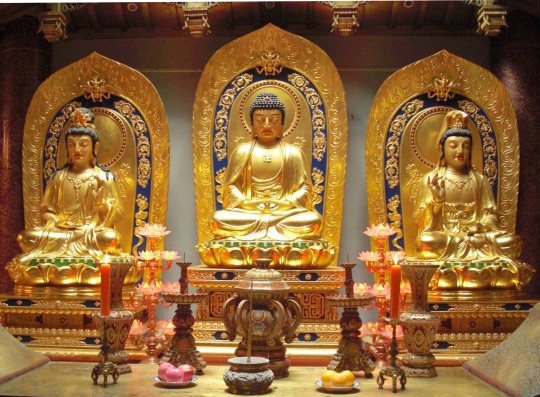
Jodo Shinshu (also known as Shin Buddhism in the West) is a school of Japanese Pure Land Buddhism founded by Shinran Shonin (1173-1262). This tradition emphasizes salvation through faith alone rather than relying on one’s own efforts to attain enlightenment.
The teaching is based on the Three Pure Land Sutras – The Larger Sutra of Eternal Life, The Amida Sutra and the Meditation Sutra – the primary being the Larger Sutra in which Amida Buddha made his Original Vow to save without any discrimination all sentient beings who call his Name in true faith. The essence of this faith in Shin Buddhism lies in awakening - awakening both to one’s own karmic reality as an unenlightened being and the unconditional love of Amida Buddha. These are two aspects of the same reality: true faith. Our awakening is expressed through the act of pronouncing Amida’s Name – Namu Amida Butsu – meaning “I take refuge in Amida Buddha”, which is known in this tradition as the nembutsu. The nembutsu in this form is the ‘right act’ that ensures us of birth in the PureLand and our subsequent Enlightenment. Pronouncing the name is therefore an expression of our gratitude to Amida, and to everyone and everything which has led us to encounter his saving Vow.
Amida Buddha is called The Buddha of Infinite Light and Eternal Life. Infinite Light represents wisdom illuminating the darkness of our ignorance and Eternal Life represents his compassion, for as long as there are sentient beings caught in the wheel of suffering, he will remain to bring them to his Pure Land.
Shinran Shonin named seven patriarchs who transmitted the PureLand teaching – from India: Nagarjuna (c. 150-250) and Vasubandhu (c.300-400), from China: T’an Luan (476-542), Tao-ch’o (562-645) and Shan Tao (613-681) and from Japan: Genshin (942-1017) and Honen Shonin (1133-1212). Their most important works cited by Shinran Shonin are: The Discourse on the Ten Stages (Nagarjuna), The Treatise on the Pure Land (Vasubandhu), The Commentary on the Treatise on the Pure Land (T’an Luan), Passages on the Land of Happiness (Tao-ch’o), The Exposition of the Meditation Sutra (Shan Tao), The Essentials for Birth in the Pure Land (Genshin) and Passages on the Nembutsu Chosen by Amida Buddha in His Original Vow (Honen Shonin).
Shinran Shonin encountered his master Honen at the age of 29 and it was through this encounter that he was led to an awakening of faith in Amida Buddha. Before encountering his master Shinran Shonin studied as a monk in the Tendai tradition on MountHeie, considered the epicentre of Buddhist learning at that time. Through his sincere efforts in performing the various practices, he was ultimately led to realise the shortcomings of the human condition in bringing about one’s own enlightenment. Following this realisation, he undertook a 100 day retreat at Rokkaku-do temple, where on the 95th day he was visited in a vision by Avalokitesvara Bodhisattva (in the form of Prince Shotoku), advising him to seek out Honen Shonin.
Prior to Honen Shonin, the PureLand teachings had always existed as part of, but not independent from, other traditions such as Tendai and Shingon. With the formation of the Jodo Shu school by Honen Shonin, however, emphasis was given to pronouncing the nembutsu with pure faith and setting aside all other practices. Shinran Shonin remained his follower for six years until the two were separated through exile during the oppression of the nembutsu teaching in 1207.
Another important figure in the history of Shin Buddhism is its eighth leader, Rennyo Shonin (1415-1499). During this time many divergent teachings were spreading and the school was in danger of fragmenting. As part of his propagation of the Shin Buddhist teaching, Rennyo Shonin composed a series of Letters, known as Ofumi, which were sent to Shin Buddhist temples and followers, clarifying the original teachings of Shinran Shonin. Because of this Rennyo Shonin is seen as the restorer of the tradition. These letters are still read aloud today in daily services.
Daily serviceat a Shin Buddhist temple consists of reciting the nembutsu and chanting sutras, various teachings such as Shinran Shonin’s Hymn on the Right Faith in the Nembutsu (Shoshinge) and Japanese Hymns (wasan). These services (otsutome or
gongyo) are performed not as a way of generating merit for oneself or others but with the heart of gratitude for all that has been done for us by the Buddha and those around us.
18 notes
·
View notes
Text
Basics of Buddhism
Lotus Sutra – ‘Juryo’ Chapter 16
Life Span
Myoho renge kyo – nyorai juryo’hon dai ju-roku
Ji ga toku bur^rai. Sho kyo sho kosshu. Muryo hyaku sen man. Oku sai asogi. Jo seppo kyoke Mushu oku shujo. Ryo nyu o butsu-do. Nirai muryo ko.
“Since I attained Buddhahood the number of kalpas that have passed is an immeasurable hundreds, thousands, ten thousands, millions, trillions, asamkhyas. Constantly I have preached the Law, teaching, converting countless millions of living beings, causing them to enter the Buddha way, all this for immeasurable kalpas.
I do shujo ko. Hoben gen nehan. Ni jitsu fu metsu-do. Jo ju shi seppo.
“In order to save living beings, as an expedient means I appear to enter nirvana but in truth I do not pass into extinction. I am always here preaching the Law.
Ga jo ju o shi. I sho jin-zu-riki. Ryo tendo shujo. Sui gon ni fu ken.
“I am always here, but through my transcendental powers I make it so that living beings in their befuddlement do not see me even when close by.
Shu ken ga metsu-do. Ko kuyo shari. Gen kai e renbo. Ni sho katsu-go shin.
“When the multitude see that I have passed into extinction, far and wide they offer alms to my relics. All harbor thoughts of yearning and in their minds thirst to gaze at me.
Shujo ki shin-buku. Shichi-jiki i nyunan. Isshin yok^ken butsu. Fu ji shaku shinmyo. Ji ga gyu shuso. Ku shutsu ryojusen.
“When living beings have become truly faithful, honest and upright, gentle in intent, single-mindedly desiring to see the Buddha not hesitating even if it costs them their lives, then I and the assembly of monks appear together on Holy Eagle Peak.
Ga ji go shujo. Jo zai shi fu-metsu. I hobenrik^ ko. Gen u metsu fu-metsu. Yo-koku u shujo. Kugyo shingyo sha. Ga bu o hi chu. I setsu mujo ho.
“At that time I tell the living beings that I am always here, never entering extinction, but that because of the power of an expedient means at times I appear to be extinct, at other times not,
and that if there are living beings in other lands who are reverent and sincere in their wish to believe, then among them too I will preach the unsurpassed Law.
Nyoto fu mon shi. Tan ni ga metsu-do. Ga ken sho shujo. Motsu-zai o kukai. Ko fu i gen shin. Ryo go sho katsu-go. In go shin renbo. Nai shutsu I seppo.
“But you have not heard of this, so you suppose that I enter extinction. When I look at living beings I see them drowned in a sea of suffering; therefore I do not show myself, causing them to thirst for me. Then when their minds are filled with yearning, at last I appear and preach the Law for them.
Jin-zu riki nyo ze. O asogi ko. Jo zai ryo jusen. Gyu yo sho jusho. Shujo ken ko jin. Dai ka sho sho ji. Ga shi do annon. Tennin jo juman. Onrin sho dokaku. Shuju ho Shogon. Hoju ta keka. Shujo sho yuraku. Shoten gyaku tenku. Jo sas^shu gi-gaku. U mandara ke. San butsu gyu daishu. Ga jodo fu ki. Ni shu ken sho jin. Ufu sho kuno. Nyo ze shitsu juman.
“Such are my transcendental powers. For asamkhya kalpas constantly I have dwelled on Holy Eagle Peak and in various other places. When living beings witness the end of a kalpa and all is consumed in a great fire, this, my land, remains safe and tranquil, constantly filled with heavenly and human beings. The halls and pavilions in its gardens and groves are adorned with various kinds of gems. Jeweled trees abound in flowers and fruit where living beings enjoy themselves at ease. The gods strike heavenly drums, constantly making many kinds of music. Mandarava blossoms rain down, scattering over the Buddha and the great assembly. My pure land is not destroyed, yet the multitude see it as consumed in fire, with anxiety, fear and other sufferings filling it everywhere.
Ze sho zai shujo. I aku-go innen. Ka asogi ko. Fu mon sanbo myo.
“These living beings with their various offenses, through causes arising from their evil actions,
spend asamkhya kalpas without hearing the name of the Three Treasures.
Sho u shu ku-doku. Nyuwa shichi-jiki sha. Sokkai ken gashin. Zai shi ni seppo. Waku-ji i shi shu. Setsu butsu-ju muryo. Ku nai ken bussha. I setsu butsu nan chi.
“But those who practice meritorious ways, who are gentle, peaceful, honest and upright, all of them will see me here in person, preaching the Law. At times for this multitude I describe the Buddha's life span as immeasurable, and to those who see the Buddha only after a long time I explain how difficult it is to meet the Buddha.
Ga chi-riki nyo ze. Eko sho muryo. Jumyo mushu ko. Ku shugo sho toku.
“Such is the power of my wisdom that its sagacious beams shine without measure. This life span of countless kalpas I gained as the result of lengthy practice.
Nyoto u chi sha. Mot^to shi sho gi. To dan ryo yo jin. Butsu-go jip^puko. Nyo i zen hoben. I ji o shi ko. Jitsu zai ni gon shi. Mu no sek^komo. Ga yaku I se bu. Ku sho kugen sha.
“You who are possessed of wisdom, entertain no doubts on this point! Cast them off, end them forever, for the Buddha's words are true, not false. He is like a skilled physician who uses an expedient means to cure his deranged sons. Though in fact alive, he gives out word he is dead,
yet no one can say he speaks falsely. I am the father of this world, saving those who suffer and are afflicted.
I bonbu tendo. Jitsu zai ni gon metsu. I joken ga ko. Ni sho kyoshi shin. Ho-itsu jaku go-yoku. Da o aku-do chu. Ga jo chi shujo. Gyo do fu gyo do. Zui o sho ka do. I ses^shuju ho.
“Because of the befuddlement of ordinary people, though I live, I give out word I have entered extinction. For if they see me constantly, arrogance and selfishness arise in their minds. Abandoning restraint, they give themselves up to the five desires and fall into the evil paths of existence. Always I am aware of which living beings practice the way, and which do not, and in response to their needs for salvation I preach various doctrines for them.
Mai ji sa ze nen. I ga ryo shujo. Toku nyu mu-jo do. Soku joju busshin.
“At all times I think to myself: How can I cause living beings to gain entry into the unsurpassed way and quickly acquire the body of a Buddha?”
2 notes
·
View notes
Text
Sayonara -23’, this n that…
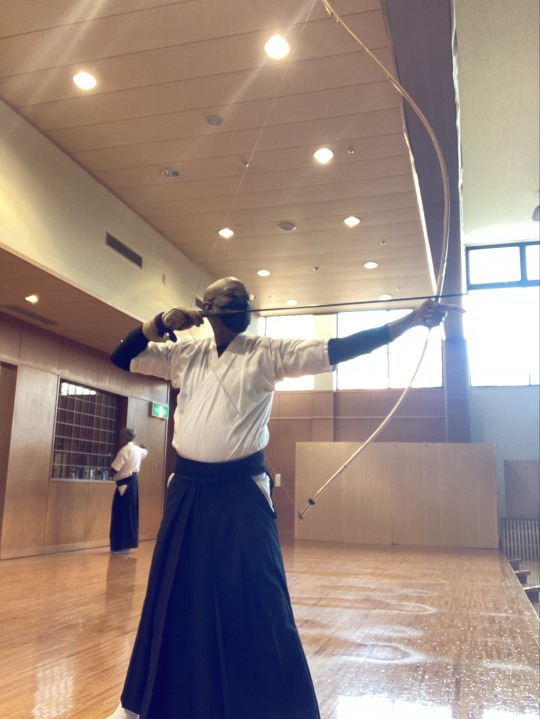
View On WordPress
#Archery#Blues#Blues band#Buddhism#Buddhist#Buddhist Temple#Chan#Chan Buddhism#Classical Shakuhachi#Funk#funky music japan#Jam session#Jamm session#Japan#Jazz#jodo shu#Jodo-shu Buddhism#Jodo-shu Buddism#Kansai#Komuso#Kung Fu#Kyudo#Live House#Live music#Live session#Martial Art#meditation#Motorbiking#Music#Nihon
3 notes
·
View notes
Text
Що таке буддизм чистої землі
(Dear readers, I wanted to try and summarize the Pure Land Buddhist teachings in Ukrainian. There isn’t much information, so I wrote this post for Ukrainian audiences. It summarizes teachings from other posts. Thank you for your patience) Привіт, я радий мати українських читачів, які цікавляться буддизмом. Тому я хотів написати цей блог саме для українців. Зверніть увагу, я трохи вивчив…
#Amida#Buddhism#Аміда Будда#Джодо Шу#Японія#буддизм#Japan#Jodo Shu#Nembutsu#Pure Land#Ukraine#ukrainian language
2 notes
·
View notes
Photo

It's always nice to stumble across a Buddhist Temple hidden away between all the concrete in Tokyo. This is a branch of Zenkoji in Nagano. Which I actually visited a few years ago. It's unique as it was built before Buddhism was split up into different sects and schools in Japan. Today it is run by Tendai and Jodo-shu monks. #niomon #guardian #buddhisttemple #kitaaoyama #shaolin #tokyo #仁王門 #善光寺別院 #善光寺 #北青山 #東京 (at 信州善光寺別院) https://www.instagram.com/p/CTuRLOzvqiG/?utm_medium=tumblr
0 notes
Text
I became interested in "Jodo-shu and Eisa" after hearing about the Buddhist priest Fukuchu Shonin and Eisa in class. The reason is that in Okinawa today, events to enjoy Eisa are held outside of the Lunar Bon Festival. In this report, I would like to focus on "Jodo-shu and Eisa," although I will not discuss why this happened.
It is assumed that research on eisa in Japan has been conducted since the 1990s. Therefore, it would be impossible to assert that there is any core material. This means that research on eisa is extremely difficult. In other words, eisa research is an extremely difficult field. It is reasonable to assume that it has been constructed by analyzing from various angles with limited materials.
First of all, there is the "Yamauchi theory" that the Buddhist priest Fuchu Shonin of the Jodo sect brought Nembutsu to the Ryukyu Islands in 1603. In 1603, in order to propagate Nembutsu from mainland Japan to the Ryukyu Islands, he translated the culture of Nembutsu into an easy-to-understand form and created many Ryukyu Nembutsu. Later, in the late 18th century, they invited Nembutsu practitioners to the Bon Festival in the area where Shuri Castle, the symbol of the Ryukyu Dynasty, is located. It is said that the custom of having them sing Nembutsu songs and make offerings to the spirits began to take root. The Nembutsuja is a Kyotaro (Chondara) who performs the Banzai dance and goes from house to house.
At about that time, a song with sanshin accompaniment was composed by a musician based on the Jippin Nembutsu. It is said to have been an eisa song that was sung at the beginning of the Bon dance. However, Gibo, who inherited the "Yamauchi theory," noted that the lyrics of the songs used in the eisa, which were supposed to be Bon dances, were moashibi songs (folk songs, etc.) about love. On the other hand, eisa in many areas is originally a Buddhist prayer song. I personally am not sure if this is the basis of the story, but Yamauchi and Gibo state that the Buddhist monk Fukunaka Shonin spread eisa to Okinawa based on these facts.
However, there are some eisa researchers who doubt and criticize the fact that Fukuchu Shonin was the first to bring Nembutsu to the Ryukyu Dynasty. According to Ikenomiya, "It is the consensus of various scholars that the nembutsu sage, who chanted nembutsu songs, came to Ryukyu long before the Satsuma clan's invasion of Ryukyu (1609) as a puppeteer (chondara). This is because the nenbutsu has titles such as "Jodo-shu no bunda" and the lyrics include words such as "Amida no jodo" eisa monogatari, which would have linked the nenbutsu to Fukunaka of the Jodo sect" (Tsukada, 2019, Kindle edition, No. 656). (Tsukada, 2019, Kindle edition, No. 656). Sadahiro China, a researcher in the history of Okinawan religions, has also criticized the descriptions in "Derivation Records".
As a layman, it is difficult for me to judge whose argument is correct: Yamauchi, Gibo, Ikemiya, or China. Nevertheless, I can say that it is a fact that there are various sects of Buddhism, and that there are people who brought "Pure Land Buddhism" to Okinawa.
Eisa today has become an event for tourism and to entertain the locals, in addition to the Doge's festival held during the old Bon Festival. I saw a scene where Kyotaro (Chondara), who used to go around the house chanting Buddhist prayers, handed out candy balls to children who were watching the eisa while following the rhythm. Furthermore, as creative eisa has become more active, the existence of traditional local eisa is diminishing. In other words, it could be said that they are losing their religious significance.
It is difficult to say at this point whether the Buddhist monk Fuchu Shonin brought eisa to the Ryukyu Islands or whether the Jodo sect of Buddhism was established before that. However, it is a matter of concern that the religious connotation is fading from the eisa, which continues to evolve with time.
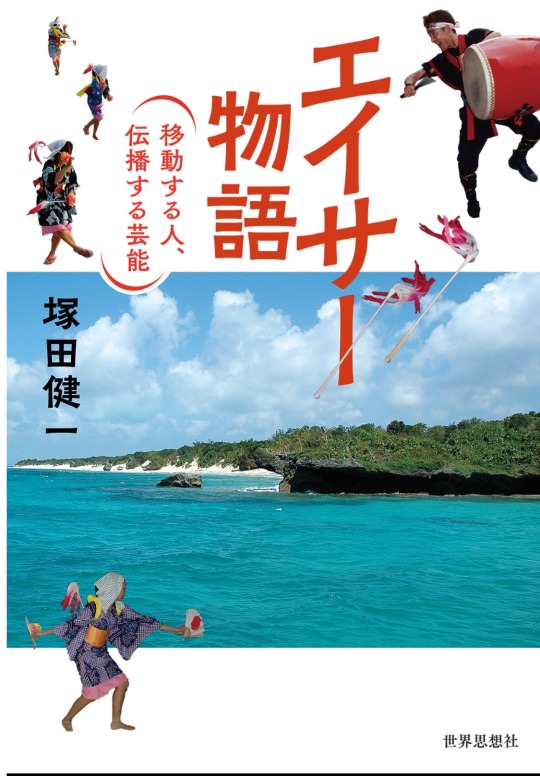
0 notes
Text
Buddhism Basics: The Sixteen Bodhisattva Precepts, The Four Noble Truths and The Noble Eightfold Path.
Here we will be looking at the Sixteen Bodhisattva Precepts, The Four Noble Truths, and The Noble Eightfold Path. The basis of most schools of Mahayana Buddhism. Mahayana Buddhism is a giant umbrella term that characterizes many schools of thought in Buddhism. In contrast to the Theravada Buddhism thought. In Mahayana we instill in ourselves the Bodhisattva path to help other sentient beings reach enlightenment, where as in Theravada thought the highest goal is that of Ahratship, or one who has released themselves from the fetters of existence and becomes a non-returner. Where as in Mahayana Buddhism one seeks the path of the Bodhisattva to lead others to the path of enlightenment. Many Bodhisattvas will chose to remain in the cycle of rebirth out of compassion for sentient beings. Where the goal of the Ahrat is to solely become a non-returner through the teachings of Shakyamuni Buddha alone. Here is a simplified overview of the Bodhisattva Precepts, the goal of Mahayana Buddhism. The Four Noble Truths and The Noble Eightfold Path. The Four Noble Truths and the Noble Eightfold Path are essential to all schools of Buddhism regardless of tradition where it be Mahayana, Theravada or Vajrayana.
Sixteen Bodhisattva Precepts
Taking refuge in the Buddha
Taking refuge in the Dharma
Taking refuge in the Sangha
Do not create Evil
Practice Good
Actualize Good For Others
Respect life – Do not kill
Be giving – Do not steal
Honor the body – Do not misuse sexuality
Manifest truth – Do not lie
Proceed clearly – Do not cloud the mind
See the perfection – Do not speak of others' errors and faults
Realize self and others as one – Do not elevate the self and blame others
Give generously – Do not be withholding
Actualize harmony – Do not be angry
Experience the intimacy of things – Do not defile the Three Treasures
The Four Noble Truths
Dukkha (suffering, incapable of satisfying, painful) is an innate characteristic of existence in the realm of samsara.
Samudaya (origin, arising) of this dukkha, which arises or "comes together" with taṇhā ("craving, desire or attachment").
Nirodha (cessation, ending) of this dukkha can be attained by the renouncement or letting go of this taṇhā.
Magga (path, Noble Eightfold Path) is the path leading to renouncement of tanha and cessation of dukkha.
The Noble Eightfold Path
The eight Buddhist practices in the Noble Eightfold Path are:
Right View: our actions have consequences, death is not the end, and our actions and beliefs have consequences after death. The Buddha followed and taught a successful path out of this world and the other world (heaven and underworld/hell). Later on, the right view came to explicitly include karma and rebirth, and the importance of the Four Noble Truths, when "insight" became central to Buddhist soteriology.
Right Resolve or Intention: the giving up of home and adopting the life of a religious mendicant in order to follow the path; this concept aims at peaceful renunciation, into an environment of non-sensuality, non-ill-will (to loving kindness), away from cruelty (to compassion). Such an environment aids contemplation of impermanence, suffering, and non-Self.
Right Speech: no lying, no rude speech, no telling one person what another says about him to cause discord or harm their relationship.
Right Conduct or Action: no killing or injuring, no taking what is not given, no sexual acts, no material desires.
Right Livelihood: beg to feed, only possessing what is essential to sustain life.
Right Effort: preventing the arising of unwholesome states, and generating wholesome states, the bojjhagā (seven factors of awakening). This includes indriya-samvara, "guarding the sense-doors", restraint of the sense faculties.
Right Mindfulness (sati; Satipatthana; Sampajañña): "retention", being mindful of the dhammas ("teachings", "elements") that are beneficial to the Buddhist path. In the vipassana movement, sati is interpreted as "bare attention": never be absent minded, being conscious of what one is doing; this encourages the awareness of the impermanence of body, feeling and mind, as well as to experience the five aggregates (skandhas), the five hindrances, the four True Realities and seven factors of awakening.
Right samadhi (Passaddhi; Ekaggata; sampasadana): practicing four stages of dhyāna ("meditation"), which includes samadhi proper in the second stage, and reinforces the development of the bojjhagā, culminating into upekkha (equanimity) and mindfulness. In the Theravada tradition and the Vipassana movement, this is interpreted as ekaggata, concentration or one-pointedness of the mind, and supplemented with Vipassana-meditation, which aims at insight.
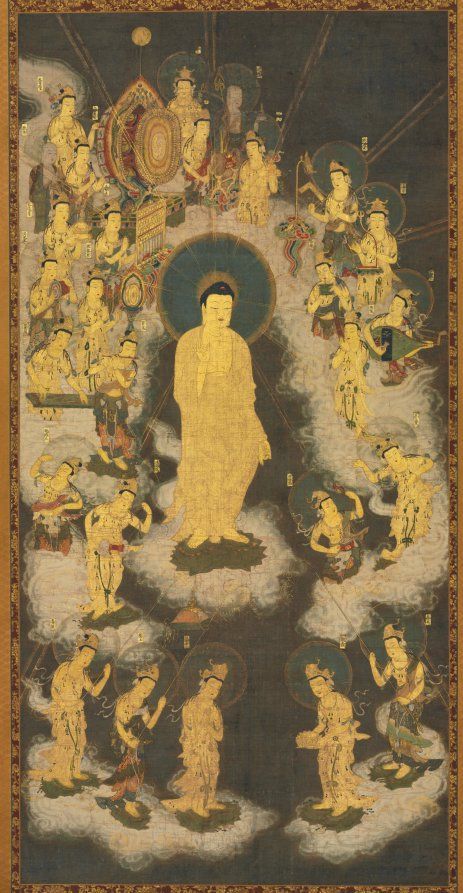
***Amida Nyorai and their 25 Bodhisattva attendants descending from Gokuraku-Jodo to lead the departed back to the Western Pure Land.***
24 notes
·
View notes